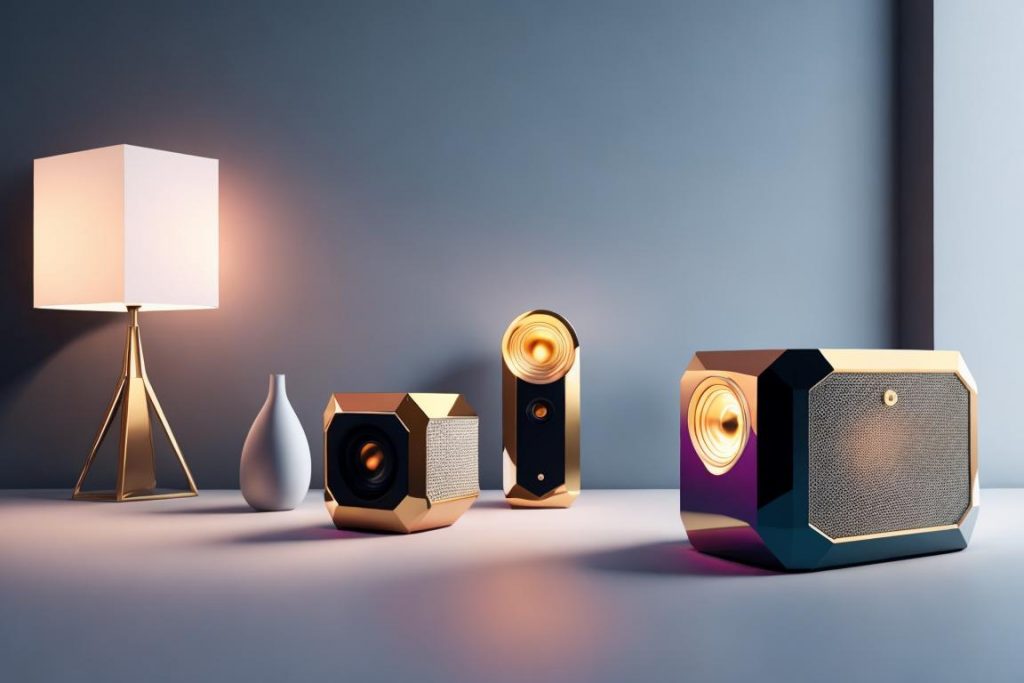
Designing the Audio Speakers of Tomorrow: Inclusivity and Accessibility at the Forefront
As technology continues to advance at breakneck speed, the call for inclusive and accessible design becomes more urgent. Reflecting on my journey in this field, I realize the importance of considering the diverse needs of all users, including those with disabilities, when creating the next generation of audio speakers.
Crafting the audio speakers of tomorrow with inclusivity and accessibility in mind isn’t just a moral duty — it’s also a strategic advantage. By incorporating universal design principles and leveraging user feedback, we can develop products that resonate with a broader audience. The future of audio technology is inclusive, and the companies that embrace this will lead to both innovation and market success.
Understanding the importance of inclusive design has been an enlightening experience for me. Inclusive design ensures that products are usable by everyone, regardless of their physical, sensory, or cognitive abilities. With over 1 billion people worldwide living with some form of disability, according to the World Health Organization, designing with inclusivity in mind not only broadens market reach but also fosters a more equitable society.
Key Features of Inclusive and Accessible Audio Speakers
1. Universal Design Principles
Universal design principles are the cornerstone of creating inclusive products. They include:
- Equitable Use: Making sure the speaker can be used by people with diverse abilities. Imagine sitting in a living room with your grandparents, both of whom have limited mobility and vision issues. We all want to listen to our favorite music. The speaker we’re using has large, easy-to-press buttons that are clearly labeled in high-contrast colors. There’s also voice control, so your grandparents can simply say, “Play jazz music,” and the speaker responds. They don’t need to worry about small, hard-to-read controls. This speaker ensures that everyone, regardless of their physical abilities, can enjoy music without frustration.
- Flexibility in Use: Accommodating a wide range of individual preferences and abilities. Picture a family with diverse needs. The father loves listening to podcasts while cooking, the mother enjoys soothing classical music during yoga, and their child, who has hearing impairments, uses Bluetooth-enabled hearing aids. This speaker can adapt to each of their needs seamlessly. It connects to the father’s smartphone via Bluetooth, plays classical music from a playlist, and pairs effortlessly with the child’s hearing aids, ensuring clear, personalized sound. It accommodates everyone’s preferences, making it a versatile addition to their home.
- Simple and Intuitive Use: Ensuring the design is easy to understand and operate. Think of a busy mom juggling household chores while helping her kids with homework. She needs a speaker that doesn’t add to her stress. This speaker has a minimalistic design with straightforward controls. The buttons are marked with universal symbols, like a play/pause icon and a volume up/down indicator. When she needs to turn on some background music, she doesn’t have to fiddle with complicated settings. Just one touch and it’s ready to go. Its simplicity makes it a seamless part of her daily routine.
- Perceptible Information: Effectively communicating information to all users. Imagine being in a room where everyone speaks different languages or has different sensory preferences. The speaker in the center of the room communicates through multiple channels. It uses LED lights to show the current volume level and playback status. When a song changes, it announces the new track audibly for those who are visually impaired and displays the track information on a connected app for those who prefer visual cues. This way, everyone knows what’s happening, regardless of their preferred mode of receiving information.
- Tolerance for Error: Reducing the risk of accidental or unintended actions. Picture a group of friends at a party, and one of them accidentally spills a drink on the speaker. Instead of malfunctioning, the speaker is designed with a water-resistant exterior and features that prevent accidental inputs. Even if someone accidentally presses multiple buttons at once, the speaker has built-in safeguards that ignore unintended commands, ensuring the music keeps playing smoothly. This design not only handles physical accidents but also forgives user errors, making it reliable in any situation.
2. Physical Accessibility
- Ergonomic Controls: Large, tactile buttons and voice control to assist users with limited dexterity. Picture an elderly man named Joe who loves listening to classical music. Joe has arthritis, making it difficult for him to use small, finicky buttons. The speaker he uses has large, tactile buttons that are easy for him to press, even with his limited dexterity. Additionally, the speaker is equipped with voice control. Joe can simply say, “Play Beethoven’s Symphony №9,” and the speaker responds immediately, providing him with a seamless and enjoyable listening experience.
- Adjustable Heights and Angles: Allowing the speaker to be placed or mounted at various heights and angles. Imagine a young woman named Sarah who is wheelchair-bound. She loves having her speaker within easy reach but finds that most speakers are designed to sit on high shelves. Her new speaker comes with an adjustable stand that allows it to be placed at various heights and angles. Whether she’s in the kitchen or living room, Sarah can easily adjust the speaker to her eye level, making it comfortable and convenient for her to control and enjoy her music.
- Lightweight and Portable: Designing speakers to be easy to carry and move. Consider a college student named Alex who moves frequently between his dorm room, the library, and friends’ houses. He needs a speaker that’s easy to transport. His speaker is lightweight and has a built-in handle, making it easy for him to carry around campus. Despite its portability, the speaker doesn’t compromise on sound quality, allowing Alex to enjoy his favorite tunes wherever he goes.
3. Sensory Accessibility
Designing for sensory accessibility involves:
- Visual Indicators: Using lights and color codes to indicate the speaker’s status. Visualize a busy professional named Maria who works from home. She often needs to know the status of her speaker at a glance while multitasking. Her speaker has LED lights that change color to indicate different statuses — blue for Bluetooth mode, green for connected, and red for low battery. This color-coded system allows Maria to quickly understand the speaker’s status without having to interrupt her work, enhancing her productivity.
- Audio Feedback: Providing auditory cues, such as tones or spoken feedback. Imagine a visually impaired man named Tim who loves listening to audiobooks. His speaker provides auditory feedback to help him navigate its functions. When Tim turns up the volume, the speaker emits a series of beeps that increase in pitch. When he changes the mode, it announces, “Bluetooth mode” or “AUX mode.” These auditory cues help Tim use the speaker independently and confidently.
- Tactile Feedback: Integrating haptic feedback for physical confirmation of adjustments. Think of a young girl named Emma who has both hearing and vision impairments. She loves feeling the beat of her favorite music. Her speaker is designed with haptic feedback — every time she adjusts the volume or changes a setting, the speaker gives a gentle vibration. This tactile response reassures Emma that her actions have been registered, allowing her to control the speaker effectively without needing visual or auditory confirmation.

4. Connectivity and Compatibility
Ensuring connectivity and compatibility by:
- Voice Control: Including voice assistants like Alexa, Google Assistant, or Siri for hands-free operation.
- Hearing Aid Compatibility: Ensuring compatibility with Bluetooth-enabled hearing aids.
- Multiple Connectivity Options: Offering Bluetooth, Wi-Fi, NFC, and AUX connectivity to cater to different needs.
5. Inclusive Software and Interfaces
Creating inclusive software involves:
- Customizable Settings: Allowing users to personalize sound settings and controls.
- Screen Reader Compatibility: Ensuring apps and interfaces work with screen readers.
- Accessible Manuals: Providing user guides in large print, braille, and digital formats.
6. User Testing and Feedback
Gathering insights through:
- Diverse User Testing: Involving people with disabilities in the testing phase.
- Continuous Improvement: Regularly updating products based on user feedback.
The Business Case for Inclusive Design
Market Expansion
By designing inclusive products, companies can tap into a broader market. The disposable income of working-age people with disabilities globally is $8 trillion a year in disposable income, according to estimates, and $13 trillion when including friends and family.
Brand Loyalty
Consumers are more likely to support brands that prioritize inclusivity. A study by Accenture found that 62% of consumers prefer to buy from companies that stand for a purpose reflecting their values and beliefs.
Compliance and Innovation
Adhering to inclusive design principles ensures compliance with regulations such as the Americans with Disabilities Act (ADA) and the European Accessibility Act (EAA). Focusing on inclusivity also drives innovation, leading to better products for all users.
By prioritizing inclusivity and accessibility, we can ensure that everyone, regardless of their abilities, can enjoy the rich and immersive experiences that innovative audio technology provides. This approach not only benefits users but also propels the industry forward, setting a standard for excellence and empathy in design.
